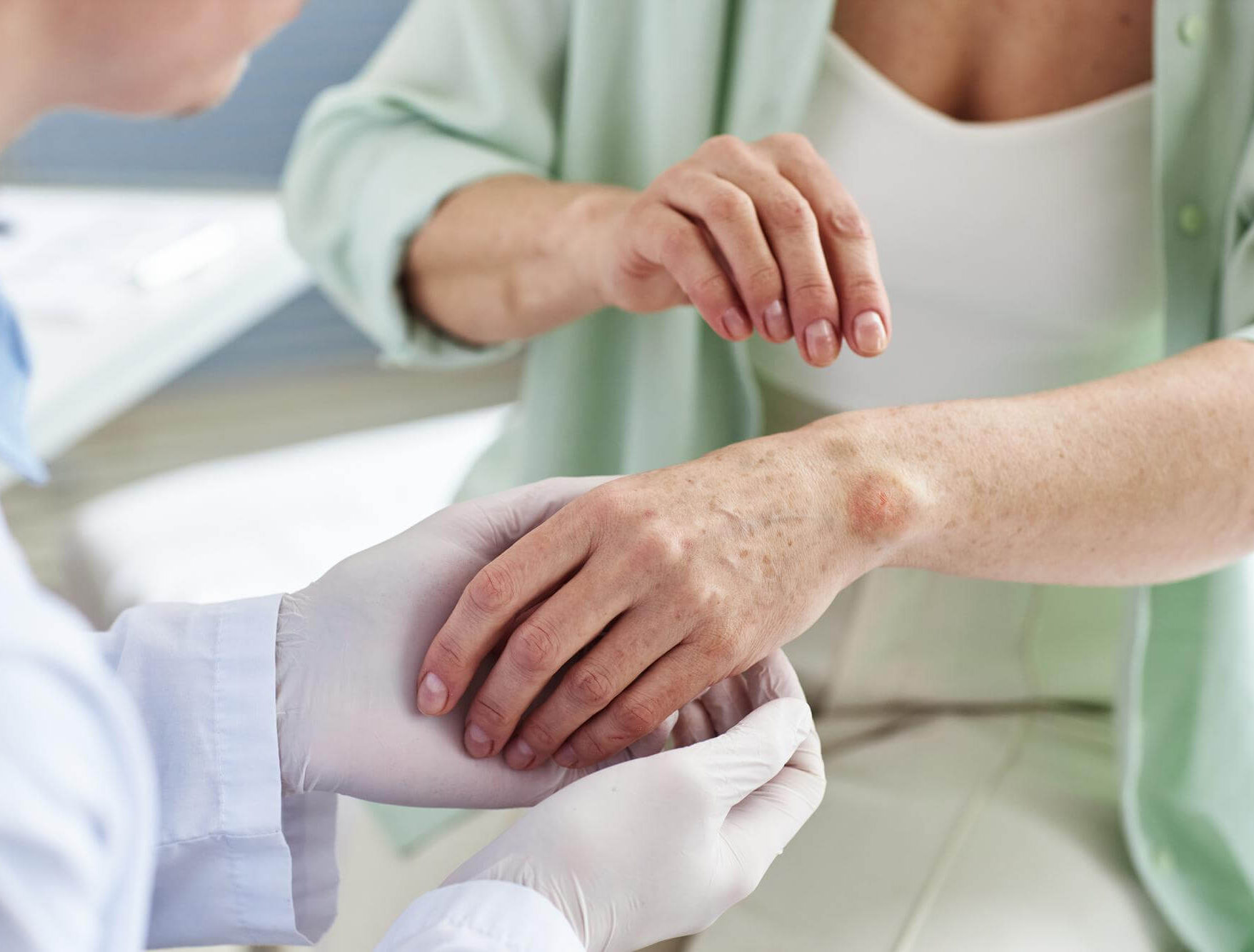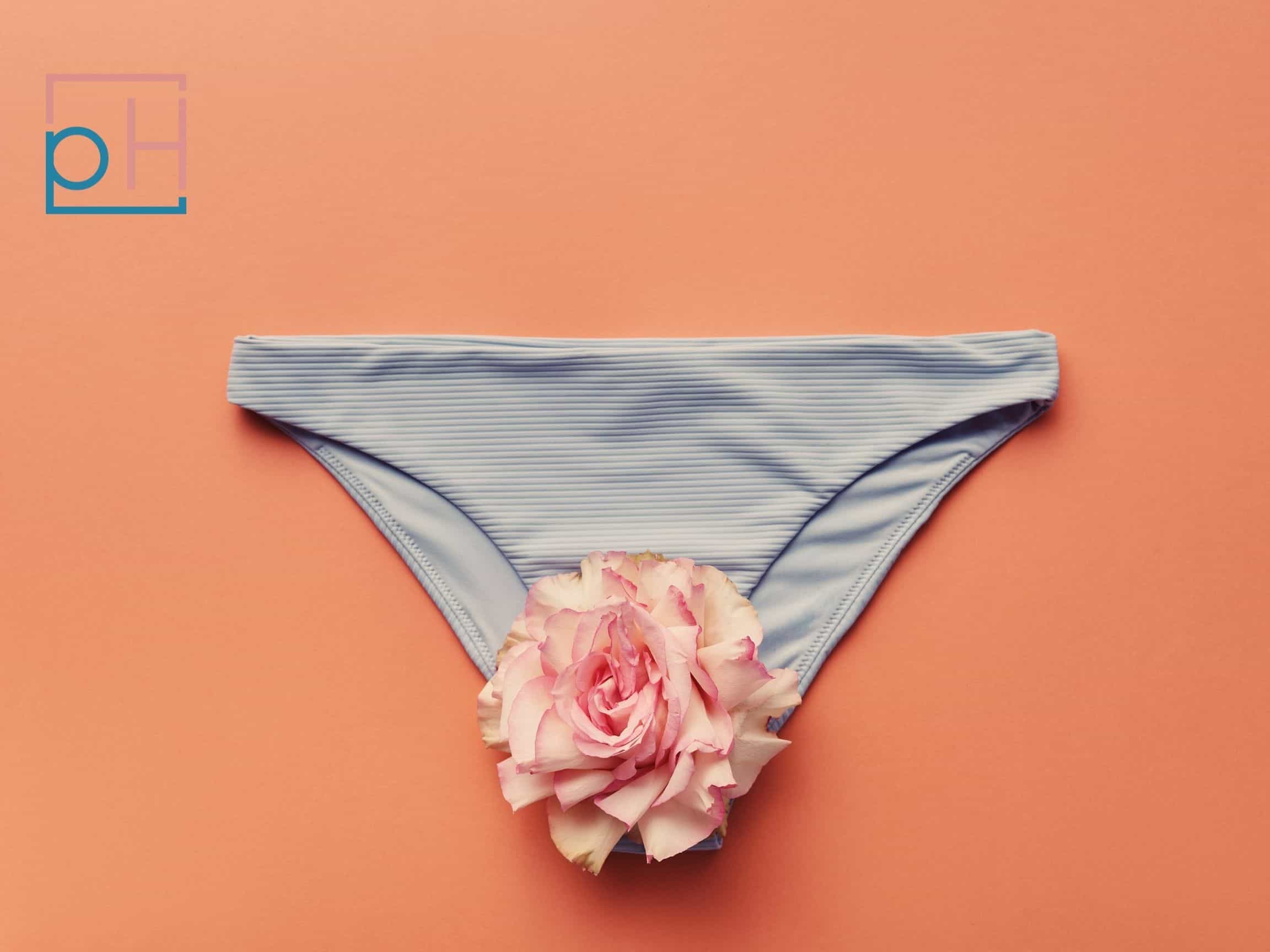Vulvodynia is pain around the opening of your vagina that lasts at least 3 months. There is no clear cause for this pain. There may be some swelling, but many people with it have a normal-looking vulva.
Treatment for vulvodynia may include topical medicines, oral medicines, physical therapy, and lifestyle changes.
If you are experiencing pelvic pain, ask your doctor or your OB-GYN about diagnosing the underlying cause so that you can talk about a treatment plan. Vulvodynia is common, but it doesn’t have to be an inconvenience in your everyday life.
Set up a free phone consultation with us. At PrimeHealth, we specialize in conditions related to interstitial cystitis, as well as IBS — both of which are associated with vulvodynia.
What is Vulvodynia?
Vulvodynia is a chronic pain condition of the vulva (around the opening of your vagina) characterized by pain or discomfort that lasts 3 months or longer.
Pain in the vulva can be constant, or the pain could come and go. Pain could be dependent on pressure or irritants. There are a lot of different situations, but vulvodynia always refers to pain around the vaginal opening.
The American College of Obstetricians and Gynecologists specifies that primary vulvodynia is not caused by skin disorders, infections, or other medical conditions. If vulvar pain is simply a symptom of another condition, some call that secondary vulvodynia.
What does vulvodynia look like? It could look like nothing, or there could be swelling and redness. Vulvodynia can take many visual forms.
There is no single cause of vulvodynia. Many situations and irritants could trigger it. If you can figure out which trigger applies to you, then you should be able to treat that underlying cause.
It occurs in at least 3%-7% of women. According to a 2012 study, only about 1% of women with vulvodynia have been diagnosed — somewhat due to women not seeking help, somewhat due to doctors incorrectly diagnosing.
Is vulvodynia contagious? No, It is not contagious. It is not a sexually transmitted disease, though it may occur during or after sexual intercourse because of genital pressure.
According to the National Vulvodynia Association, there are 2 types of vulvodynia:
- Generalized vulvodynia refers to when the entire vulva area experiences pain.
- Localized vulvodynia refers to when only a specific area of the vulva is painful.
Symptoms of Vulvodynia
What are the symptoms of vulvodynia? The primary symptom of it is pain in and around your vulva. This pain can be accompanied by other vulvodynia symptoms, such as:
- Burning
- Itching
- Soreness
- Rawness
- Stinging
- Throbbing
- Vaginismus (muscle spasms of the vagina)
- Inflammation
- Dysuria (painful urination)
- Dyspareunia (painful sexual intercourse)
Symptoms may occur in various places in your vulva, including the opening of your vagina (vestibule), the sensitive top of your vulva (clitoris), the urethra, the labia majora, and the labia minora.
If the vulvar pain gets worse over time, you should call your doctor.
Causes And Risk Factors
Every person with it is different. It is difficult to distinguish between causes and risk factors because what may cause chronic vulvar pain in one person does not cause vulva pain in another.
What causes vulvodynia to flare up? Here are potential causes or risk factors of vulvodynia:
- Interstitial cystitis
- Painful bladder syndrome
- Fibromyalgia
- Irritable bowel syndrome
- Inflammation
- Injury to the genital area
- Irritants, such as deodorant and nylon
- Musculoskeletal problems
- Weakness of the pelvic floor
- TMJ disorder
- Certain food sensitivities
- Hormonal fluctuations
- Post-traumatic stress disorder
- Past genital infections
- Menopause
- Genetics
- Sexual activity, especially without lubrication
- History of sexual abuse
- Other chronic pain syndromes
- Anxiety and depression
Is vulvodynia caused by anxiety? It can be caused by anxiety. Recent studies have connected vulvodynia and pelvic floor dysfunction with anxiety and depression.
Potential Complications
If you do not seek a diagnosis or treatment plan for it, your vulvar pain may lead to health complications over time. Here’s a list of potential complications due to untreated vulvodynia:
- Anxiety
- Depression
- Sleep disturbances
- Job performance issues
- Sexual dysfunction
- Limited clothing options
- Altered body image
- Relationship problems
- Decreased quality of life
How Vulvodynia Is Diagnosed
It is typically diagnosed by asking questions and a physical examination. Here are all the usual ways that vulvodynia is diagnosed:
- Questionnaire: Your doctor will likely ask you about your medical, surgical, and sexual history, as well as where, when, and how much you feel pain.
- Physical examination: An examination from a gynecologist of the vulvar region may include applying pressure to areas around the vulva to evaluate the location and intensity of the pain. A pelvic exam can assess your pelvic floor muscles and help identify other areas of discomfort.
- Cotton swabs: These swabs can test for infection.
- Biopsy: Your doctor might examine tissue removed from the vulvar area. This test is routine and is only performed if there is an abnormal finding during the physical exam.
When going to get diagnosed, it may help you and your doctor if you make a list of:
- Symptoms, even if they seem unrelated
- Timeline of symptoms
- Medical history
- All medications, vitamins, or supplements you take, plus the dosages
- Questions you want to ask your doctor
You want to be prepared for any questions that your doctor could ask you. Questions your doctor might ask include:
- How severe is your pain?
- How long does your pain last?
- Does anything make your pain better?
- Is your pain sharp or dull, continuous or intermittent?
- Is your pain typically triggered by dietary intake, alcohol, stress or anxiety, exercise, urination, menstruation, or sexual intercourse?
- Have you been pregnant, or could you be pregnant now?
- Have you been treated for urinary tract or vaginal infections?
An extensive Functional Medicine history may also be taken by a trained professional. This may also include digestive history, history of trauma, history of potential chronic infections, and more.
Treating Vulvodynia
What are some treatments for it? Treatments for it mainly depend on the root cause of the vulvar pain. However, below are several treatment options that have been shown to fight vulvodynia:
- Topical medications: Creams or ointments that contain anesthetics (e.g., lidocaine), antibiotics, or nerve-stabilizing medications may be used on the genital area to treat vulvodynia. These may be applied right before intercourse. (Remember, don’t excessively use OTC ointments for yeast infections without seeing your doctor.)
- Oral medications: Your doctor may prescribe tricyclic antidepressants or anticonvulsants to address vulvodynia.
- Nerve block: A nerve block is a medical injection that interrupts pain signals to the brain. Women who have long-term vulvar pain might benefit from local nerve blockade injections if other treatments have not worked.
- Physical therapy: Physical therapy is commonly used in the treatment of vulvodynia — for strengthening pelvic floor muscles or for myofascial release. Many women with vulvodynia hold tension in their pelvic floor muscles, so exercises to relax those muscles may help with vulvar pain relief. A physical therapist may use biofeedback to improve outcomes.
- Counseling: Your doctor may recommend counseling since vulvodynia can affect body image, sexual relationships, self-confidence, and quality of life. A counselor may incorporate or recommend cognitive behavioral therapy as well.
- Surgery: For cases of localized vit and vestibulodynia, a surgery called a vestibulectomy can remove vestibular tissue. This surgical procedure has been shown to relieve vulvar pain. Surgery is typically a last resort treatment.
Natural Treatments
How do you relieve it? Below are natural treatment tips and lifestyle changes that may help ease its pain:
- Reduce your daily stress levels. Like most medical conditions, stress is a significant risk factor.
- Anti-inflammatory diet
- Avoid tight clothing and pantyhose.
- Don’t use deodorant tampons or pads. Deodorant is a common irritant.
- Switch to 100% organic cotton tampon pads.
- Wear all-cotton underwear, ideally organic. Nylon is a common irritant.
- Try sleeping without underwear at night.
- Maintain a healthy sleep schedule.
- Consider taking a chasteberry supplement that can help regulate estrogen levels. Fluctuating hormones are a risk factor for vulvodynia.
- Talk to your doctor about changing your HRT regimen. Hormone replacement therapy, if perimenopausal or postmenopausal, and low hormone levels can trigger vulvodynia.
- Try cold compresses or gel packs. Place them directly on your external genital area to ease pain and itching. Don’t apply too much pressure.
- Use lubrication during sex, but not lubricants with a flavor, alcohol, or a cooling/warming sensation.
- Avoid sitting for long periods if possible. Sit on a foam donut cushion to reduce pressure on the area of the vulva.
- Avoid exercises that apply pressure to the vulva, like biking or horseback riding.
- Avoid contraceptive creams, which might be inflammatory.
- Don’t use a hairdryer to dry your genital area.
- Wash the area gently with plain water — not too hot, not too cold.
- Don’t use soap in the genital area. Don’t douche either.
- 2-3 times a day, sit in clean, lukewarm or cool water with magnesium sulfate bath salts for 5-10 minutes.
- Avoid hot tubs and soaking in hot baths. Hot water is a common irritant.
- If you suffer from IBS, seek treatment for it. IBS (irritable bowel syndrome) is a common risk factor for vulvodynia.
Dealing with it? We can help.
If you’re experiencing it, I encourage you not to feel embarrassed. It’s a very common condition that people should not be afraid to discuss with their healthcare provider. And the pain could be a sign of a more serious issue.
Schedule a free phone consultation with us right away. At PrimeHealth, we have years of experience identifying underlying causes and treating conditions with an individualized approach.
Sources
- Faye, R. B., & Piraccini, E. (2021). Vulvodynia. StatPearls [Internet].
- Reed, B. D., Harlow, S. D., Sen, A., Legocki, L. J., Edwards, R. M., Arato, N., & Haefner, H. K. (2012). Prevalence and demographic characteristics of vulvodynia in a population-based sample. American journal of obstetrics and gynecology, 206(2), 170-e1.
- Govind, V., Krapf, J. M., Mitchell, L., Barela, K., Tolson, H., Casey, J., & Goldstein, A. T. (2020). Exploring Pain-Related Anxiety and Depression in Female Patients With Provoked Vulvodynia With Associated Overactive Pelvic Floor Muscle Dysfunction. Sexual Medicine, 8(3), 517-524.
- Hesselink, J. K., Kopsky, D. J., & Sajben, N. (2016). New topical treatment of it based on the pathogenetic role of cross talk between nociceptors, immunocompetent cells, and epithelial cells. Journal of pain research, 9, 757.
- McDonald, J. S., & Rapkin, A. J. (2012). Multilevel local anesthetic nerve blockade for the treatment of generalized vulvodynia: a pilot study. The journal of sexual medicine, 9(11), 2919-2926.
- Jahshan-Doukhy, O., & Bornstein, J. (2021). Long-Term Efficacy of Physical Therapy for Localized Provoked Vulvodynia. International Journal of Women’s Health, 13, 161.
- Loflin, B. J., Westmoreland, K., & Williams, N. T. (2019). Vulvodynia: a review of the literature. Journal of Pharmacy Technology, 35(1), 11-24.
- Roemheld-Hamm, B. (2005). Chasteberry. American family physician, 72(5), 821-824.
Drummond, J. (2018). Functional Nutrition Treatment of Vulvodynia, Irritable Bowel Syndrome, and Depression: A Case Report.Integrative Medicine: A Clinician’s Journal, 17(3), 44.





